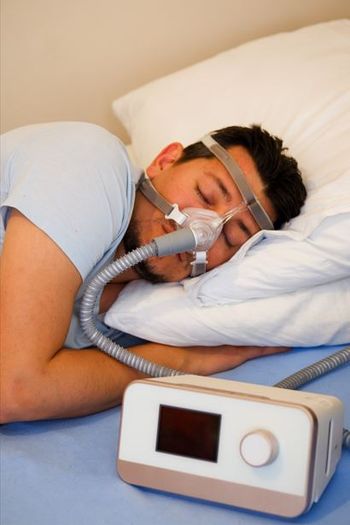
AAN: Advice by Phone Speeds Thrombolysis for Ischemic Stroke
BOSTON -- In the critical three hours of an acute ischemic stroke, a little guidance by phone can help physicians in rural areas deliver tPA to patients safely.
BOSTON, April 25 -- In the critical three hours of an acute ischemic stroke, quick guidance by phone can help physicians in rural areas deliver tPA to patients safely.
Physicians in rural hospitals who consulted a neurologist at an academic center by phone and gave only verbal descriptions of lab results and CT findings for patients having an acute ischemic stroke were able to deliver thrombolytic therapy within the three-hour therapeutic window, reported Anand G. Vaishnav, M.D., of the University of Kentucky in Lexington, and colleagues.
In a study of 121 consecutive patients, treatment began a little more than two hours from stroke onset and less than an hour after arrival at the hospital, the investigators noted in data to be presented at the American Academy of Neurology meeting here on May 2. There were three cases of intracerebral hemorrhage, and nine deaths.
Commenting on the average 132 minutes from stroke onset to tPA bolus in the study, Dr. Vaishnav noted that "this is less time than the average 144 minutes it took from stroke onset to tPA treatment in the National Institute of Neurological Disorders and Stroke tPA study, which was a large national study published in 1995 We also had lower rates of bleeding in the brain and death than the original NINDS study."
The retrospective study looked at how well neurologists in an academic medical center were able to provide expert guidance to physicians in rural community hospitals in the use of intravenous tPA. The 121 patients were later transferred to a tertiary medical center. Prior to therapy, each patient had received CT brain imaging and laboratory studies to rule out coagulopathies.
Patients were selected for treatment by a neurologist specializing in stroke who conducted a structured telephone interview of the requesting physician. The only information the consultant had to go on was the requesting physicians' report, discussion of lab results, and verbal description of radiographic findings.
The mean patient age was 63 + 16 years. The gender breakdown was 58% male and 42% female.
The authors found that the mean elapsed time from the onset of stroke symptoms to arrival at the community hospital was 55 + 23 minutes, and the elapsed door-to-tPA time was 132 + 34 minutes.
Three patients (2.5%) had symptomatic intracerebral hemorrhages, and 11 patients (9%) had asymptomatic hemorrhage. Nine patients (7.5%) died at the hospital.
Among all surviving patients, the mean length of stay was 4 + 3 days, and 47% were discharged directly home.
"We conclude that telephonic expert guidance of tPA treatment is safe, practical, and effective in overcoming barriers to optimal care of acute ischemic stroke in rural communities," the authors said.
Newsletter
Enhance your clinical practice with the Patient Care newsletter, offering the latest evidence-based guidelines, diagnostic insights, and treatment strategies for primary care physicians.


















































































































































































































































































